Driving across the Costa Rican landscape, you never quite know what to expect around the next bend. On one particularly sunny day, as I navigated the winding roads, a silhouette began to emerge on the horizon. At first, it was just a faint outline against the sky, but with each passing mile, it grew larger and more defined. Before long, the towering figure of Arenal Volcano loomed over me, its majestic presence filling the sky.
It was a magical experience, one that inspired me to explore more of Costa Rica’s famous landmarks. Here’s a journey through ten of the most iconic spots in this beautiful country.
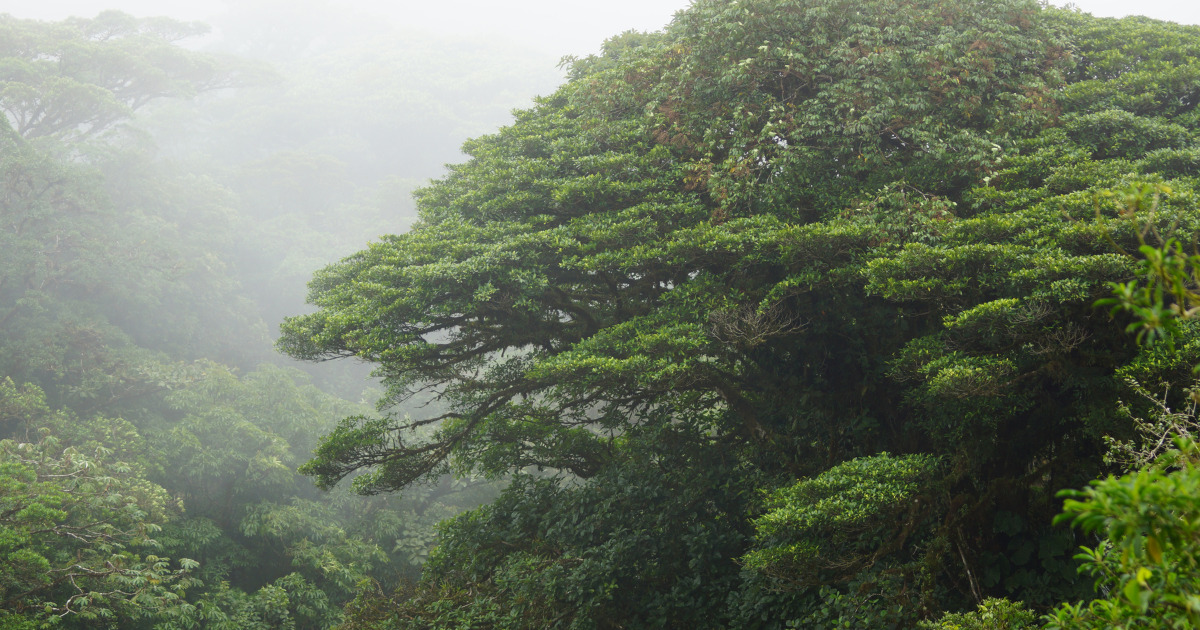
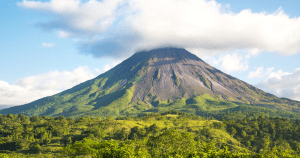
Arenal Volcano stands tall with its perfect cone shape, a quintessential image of Costa Rica’s natural beauty. This active volcano has a storied history of eruptions, the most significant one occurring in 1968, which dramatically changed the surrounding landscape. The volcano remained active for decades, with regular lava flows and ash columns, creating a captivating sight.
Today, it’s a major attraction for visitors who can hike its trails, soak in nearby hot springs, or simply marvel at its grandeur. The surrounding area also offers activities such as zip-lining, white-water rafting, and wildlife viewing, making it a hub for adventure seekers.
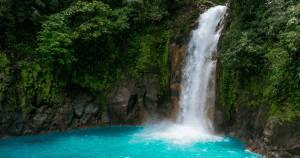
Hidden within Tenorio Volcano National Park, the Rio Celeste Waterfall is a sight to behold. Its water, an ethereal turquoise blue, is the result of volcanic minerals mixing in the river, creating a magical and almost surreal appearance. The short hike to the waterfall takes you through lush rainforest, offering opportunities to spot exotic birds, monkeys, and other wildlife. T
he legend behind Rio Celeste says that when God finished painting the sky, he washed his brushes in the river, giving it its unique color. This natural wonder is a favorite spot for photographers and nature lovers alike.
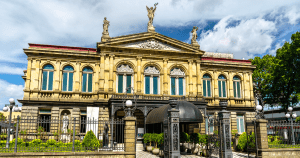
In the heart of San José, the National Theatre stands as a testament to Costa Rica’s rich cultural heritage. Built in 1897, this architectural gem showcases European-inspired design, including ornate frescoes, marble statues, and gold leaf details. It was constructed during a period of coffee wealth, reflecting the country’s prosperity at the time. The theater hosts a variety of performances, from classical music to contemporary plays, and is a symbol of national pride.
Right outside, Plaza de la Cultura buzzes with life, offering a vibrant atmosphere with street performers, vendors, and cafes. This area is perfect for immersing oneself in the cultural and historical heart of the capital.
Location:
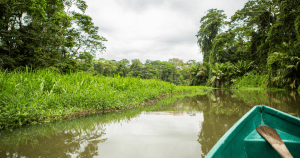
Birds hold a unique role in the ecosystem of cloud forests. They function as both harvesters and sowers, and they help regulate insect populations. Moreover, birds contribute significantly to the auditory ambiance of the cloud forest. Their songs, chirps, and calls resonate through the dense foliage, weaving a soundscape that enhances the forest’s enchanting atmosphere.
Rather than solely considering the contributions birds make to cloud forests, it’s essential to recognize the invaluable support these habitats offer birds in return. Cloud forests harbor an impressive diversity of both endemic and near-endemic species, acting as sanctuaries for wintering birds.
Furthermore, these forests serve as crucial foraging zones for migratory birds that winter further south. As these birds journey to their northern breeding grounds, they rely on cloud forests as essential pit stops along the way.

Scattered across the Diquís Delta, these pre-Columbian stone spheres are one of Costa Rica’s greatest archaeological mysteries. Ranging in size from a few centimeters to over two meters in diameter, the spheres are remarkably round and smooth.
They are believed to have been created by the indigenous Diquís culture between 500 and 1500 AD. Despite numerous theories, the exact purpose and method of their creation remain unknown. The spheres are a fascinating glimpse into the ancient history and craftsmanship of Costa Rica, and they can be found in various locations, including museums and archaeological sites.
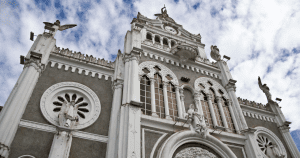
The Basilica of Our Lady of the Angels, located in Cartago, is a stunning example of religious architecture. Built in honor of Costa Rica’s patron saint, La Negrita, this basilica is a pilgrimage site for many. Each year, millions of devotees participate in the pilgrimage known as the “Romería,” walking from San José to Cartago.
The basilica itself is a blend of colonial and Byzantine styles, featuring beautiful stained glass windows and intricate altars. Its spiritual significance and architectural beauty make it a serene and inspiring place to visit.

A remote gem in the Pacific Ocean, Cocos Island is known for its incredible marine life and pirate legends. This UNESCO World Heritage Site is a paradise for divers, offering vibrant coral reefs and a chance to see hammerhead sharks, manta rays, and other marine species. The island has a rich history of pirate activity, with legends of buried treasure still captivating the imagination.
Due to its remote location and strict conservation regulations, visiting Cocos Island requires joining a live-aboard diving expedition. It’s an adventure into one of the most pristine marine environments in the world.
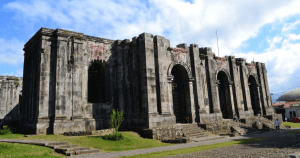
In the town of Cartago, the Ruins of the Church of Santiago Apostol stand as a poignant reminder of the past. This 16th-century church was damaged by several earthquakes, the most devastating ones in 1822 and 1910, leading to its abandonment. Today, the ruins create a picturesque site, with moss-covered stone walls and arches that invite reflection and exploration. The site is surrounded by beautiful gardens, making it a tranquil place to visit and learn about Costa Rica’s colonial history.
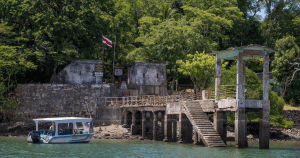
San Lucas Island, once a notorious prison, now stands as a site of historical significance and natural beauty. The prison operated from 1873 to 1991 and was known for its harsh conditions, often compared to Alcatraz. Today, the island is a wildlife refuge and historical monument, offering guided tours of the old prison buildings and scenic trails through the forest. Located in the Gulf of Nicoya, the island’s haunting past contrasts with its scenic views and rich wildlife. Exploring San Lucas Island offers a unique glimpse into Costa Rica’s history.
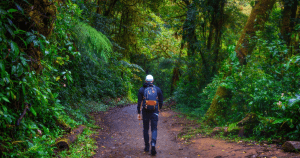
Monteverde is one of the world’s most celebrated cloud forests, known for its extraordinary biodiversity. The reserve is home to more than 2,500 plant species, 400 bird species, and countless mammals, amphibians, and insects. Walking along the hanging bridges or well-maintained trails, visitors may spot the resplendent quetzal, three-wattled bellbird, or even howler monkeys.
The cool, misty environment makes Monteverde a hub for scientific research and eco-tourism, with strong community efforts in sustainability and conservation. Its unique ecosystem offers travelers a chance to connect deeply with Costa Rica’s natural heritage.
Costa Rica is a country full of history, beauty, and fascinating landmarks. Each of these famous Costa Rica landmarks offers a unique experience, whether you’re drawn to natural wonders, historical sites, or cultural treasures. Plan your visit and see how you can integrate your favorite landmark into an unforgettable vacation. The memories you’ll create in this stunning country will stay with you long after you’ve returned home.